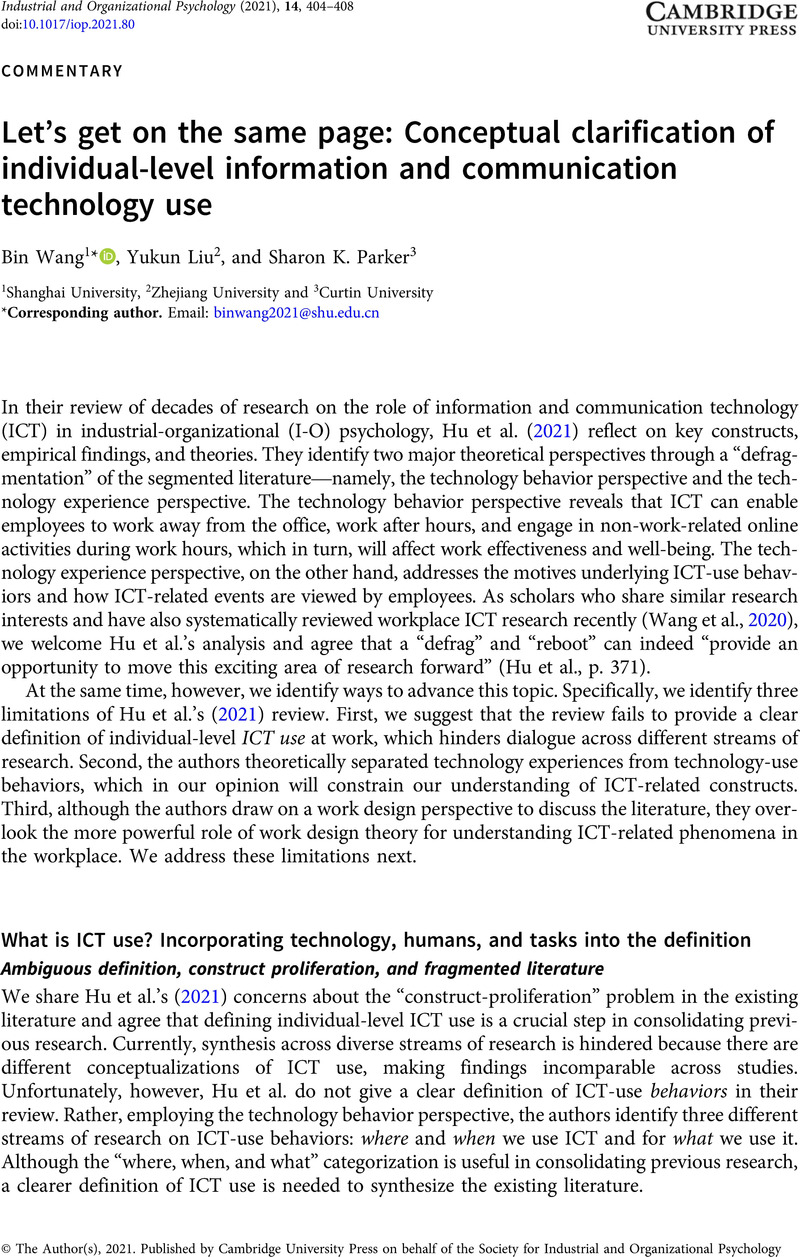Crossref Citations
This article has been cited by the following publications. This list is generated based on data provided by Crossref.
Wang, Bin
Zhang, Yue
and
Li, Beiling
2022.
Facilitating timelier research with a novel classification of workplace technology.
Industrial and Organizational Psychology,
Vol. 15,
Issue. 3,
p.
475.
Wang, Bin
Liu, Yukun
Qian, Jing
and
Parker, Sharon K.
2023.
How can people benefit, and who benefits most, from using socialisation‐oriented social media at work? An affordance perspective.
Human Resource Management Journal,
Vol. 33,
Issue. 4,
p.
1035.
Harunavamwe, Martha
and
Kanengoni, Herbert
2023.
Hybrid and virtual work settings; the interaction between technostress, perceived organisational support, work-family conflict and the impact on work engagement.
African Journal of Economic and Management Studies,
Vol. 14,
Issue. 2,
p.
252.
Keshet, Yael
Popper-Giveon, Ariela
and
Adar, Tamar
2024.
Telemedicine and time management in primary care.
Family Practice,



